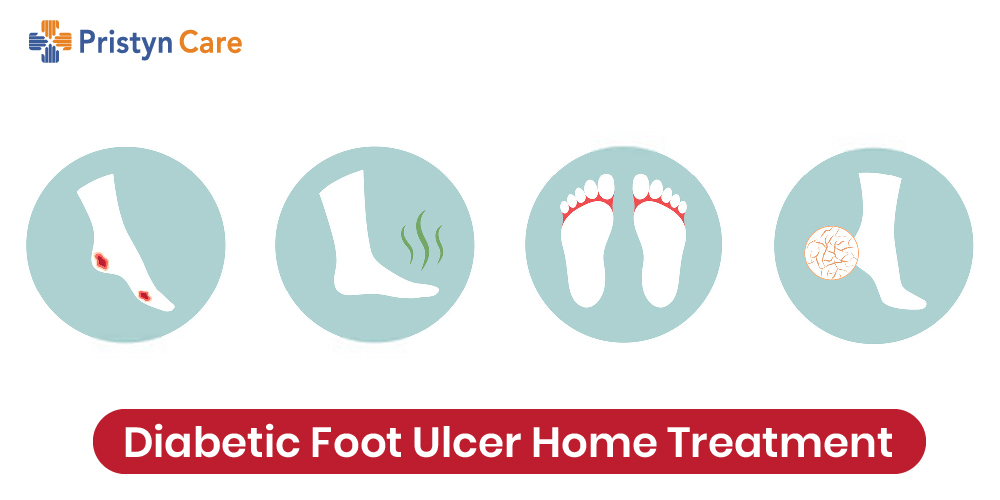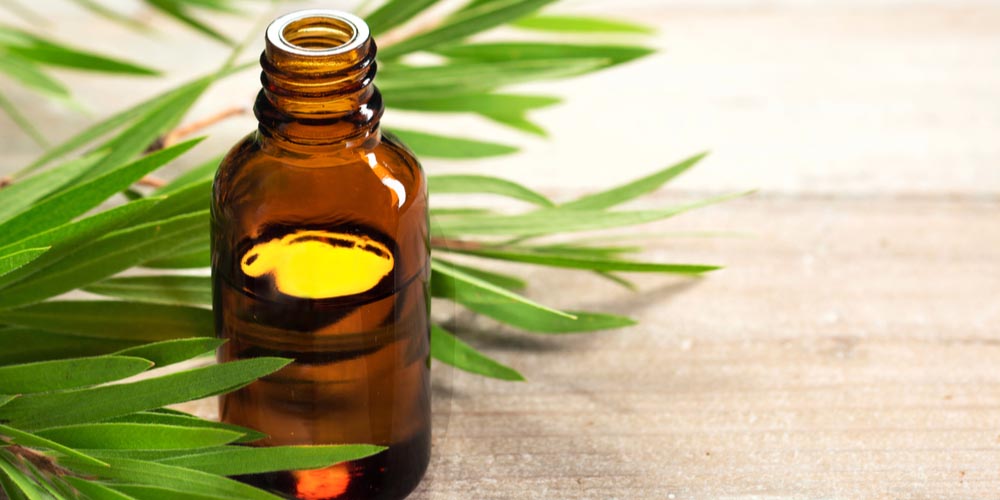
A diabetic foot ulcer is an open wound that happens due to uncontrolled sugar levels in diabetes patients. It is a troublesome condition that hinders a person from carrying on their daily routines. The worst part about diabetic foot ulcers is that person may not even be aware of its growing seriousness due to the damaged sensation of the affected area.
If you suffer from this problem of a diabetic foot ulcer, here is a sigh of relief for you in the name of home treatments or remedies. Yes, there are things that you can try at home to treat diabetic foot ulcers to some extent.
(Also read: How does diabetic foot ulcer start?)
Table of Contents
Effective Ways to Treat a Diabetic Foot Ulcer at Home
Some of the ingredients that you can easily find in your kitchen can be helpful to treat diabetic foot ulcers. Along with that, you can also make some lifestyle and dietary changes to manage the condition.
Flaxseed (oil) repairs the skin tissues
These seeds are an excellent home remedy for diabetic foot ulcers. Flax seeds work on one of the root causes of diabetic foot ulcers, vascular damage. These seeds are a rich source of omega-2 fatty acids which is necessary for repairing damaged blood vessels and for keeping the blood vessels flexible and functional. Therefore, by improving vascular health, flax seeds bring about a considerable improvement in diabetic foot wounds.

Do not completely cut down on iodine
Many people who suffer from diabetes give up consuming iodine with the fear of increased insulin resistance. But in actuality, some amount of iodine is essential for your body. Iodine is even helpful in enhancing the healing process of diabetic foot ulcers. Thus, there is no harm in including some iodine in your diet to treat the problem of diabetic foot
Vitamin E for immunity and recovery
Vitamin E is essential for the optimal functioning of the body. In the case of foot ulcers too, vitamin E produces amazing results. Vitamin E speeds up the healing process. It also improves the circulation of blood in the body. A proper supply of blood and oxygen to the wounded region prevents the wound from getting infected.

Zinc to speed up the healing
Zinc-rich foods like eggs, nuts, and legumes can prove to be very beneficial for both your diabetes and diabetic foot ulcers. Zinc promotes the production and secretion of insulin in the body and thus helps to keep blood sugar levels in check. Zinc also hastens the healing of the wound by maintaining the structural integrity of the dermal tissue.
Royal jelly/Honey bee milk to hasten the healing of the ulcer
When it comes to wound healing, the type of dressing used plays a crucial role. Recent studies have shown that Royal jelly when used for dressing diabetic foot wounds, can have miraculous effects. Royal jelly has antioxidant, antibacterial, and anti-inflammatory properties. Therefore, it reduces the pain while protecting the wound from infections. Royal Jelly also increases the rate of cell growth, thereby aiding faster healing of the wound. Thus, it is the most favored home treatment for diabetic foot ulcers.

Aloe vera has a soothing effect on ulcer
Aloe vera is known for its wonderful healing and rejuvenating effects on the skin. The antibacterial properties of aloe vera play a vital role in speeding up the treatment of diabetic foot ulcers. Thus, you can use aloe vera gel in natural form the ulcer, it will have cooling and soothing effects. You can even have one cup of aloe vera juice to boost overall health and immunity.
Tea tree oil to fight the infection
Tea tree oil is rich in antibacterial properties. You can mix the tea tree oil in equal quantity with coconut oil and use it for dressing the diabetic foot ulcer. You can even keep the wound open for some time after applying the tea mixture of tea tree and coconut oil. This home treatment of diabetic foot hastens the process of healing of the wound.

Coffee stimulates blood flow and immune response
It is yet another effective home remedy for diabetic foot ulcers. Coffee stimulates the central nervous system and enables the body’s immune response to the foot wound. It also gives a boost to the circulation of blood in the body. When the blood supply to the foot increases, sufficient amounts of oxygen and nutrients can reach the ulcerated area and prevent the ulcer from deteriorating.
What if a diabetic foot ulcer recurs even after the home treatment?
The aforementioned home treatments for diabetic foot ulcers usually work wonderfully. But in some cases, these ulcers tend to reappear again or get aggravated with another flare-up. In such cases, timely medical attention is a must for diabetic foot ulcers. To bring it to your awareness, diabetic foot ulcers can have serious health complications if you leave them untreated for a prolonged time.
So, reach out to a specialist doctor to discuss the treatment options for a diabetic foot ulcer. Depending upon the symptoms, the doctor will recommend the best-suited treatment.
The effective medical treatment for diabetic foot ulcer
In the initial stages of diabetic foot ulcers, some prescription medicines along with regular use of home remedies are enough to bring about significant improvements. For even better results, you can try the procedure of debriding the ulcer.
In debridement, the doctor removes the dead and infected tissues from the ulcer. This is an intervention procedure that boosts the healing process. Other methods that can also work in the early stages are off-loading or oxygen therapy that improves healing.
For deep and infected ulcers, however, the person may require surgery. The surgical treatments are also absolutely safe and simple and help to prevent amputation of the legs.
Getting diabetic foot ulcers treated timely is essential in order to prevent any further serious complications. Therefore, contact your podiatrist as soon as you notice the signs of a diabetic foot wound.
If you have any queries, you can contact Pristyn Care. We’ll be more than happy to resolve them for you.
Also read:







